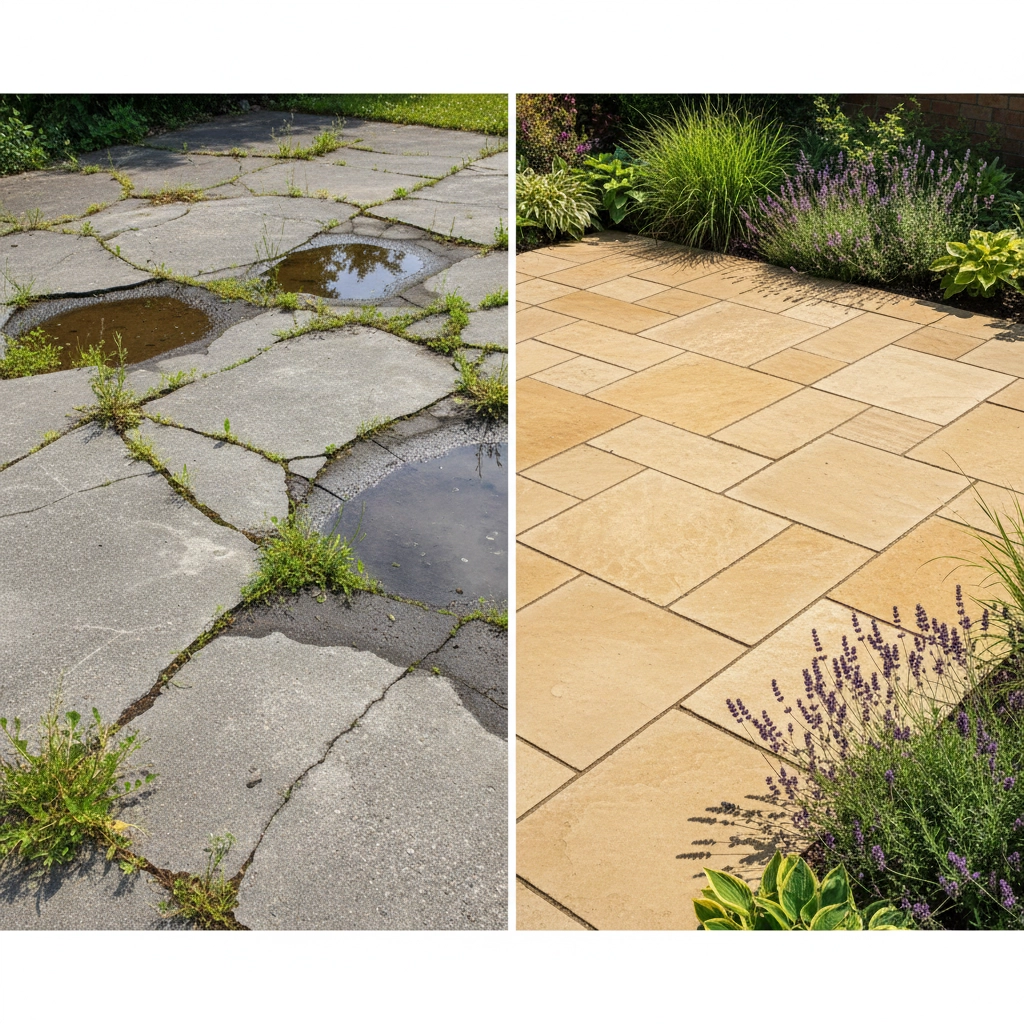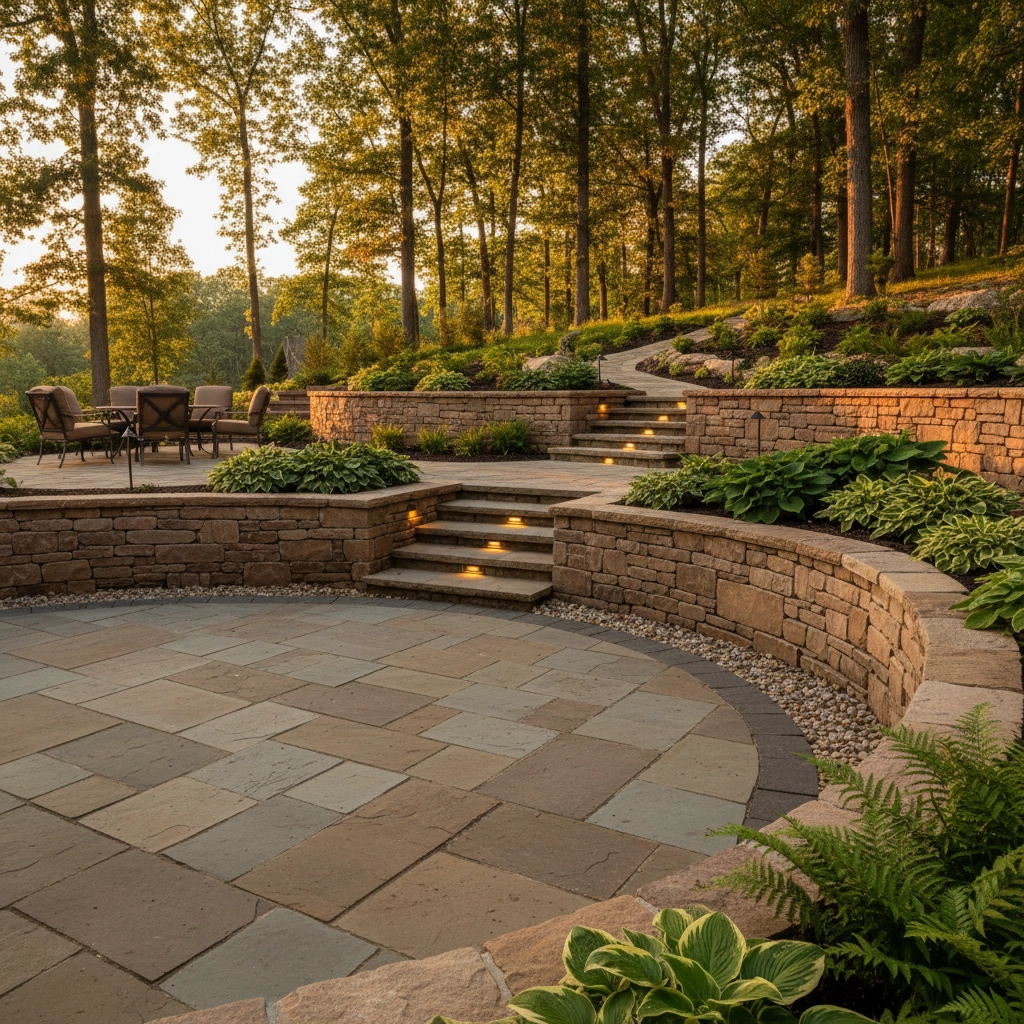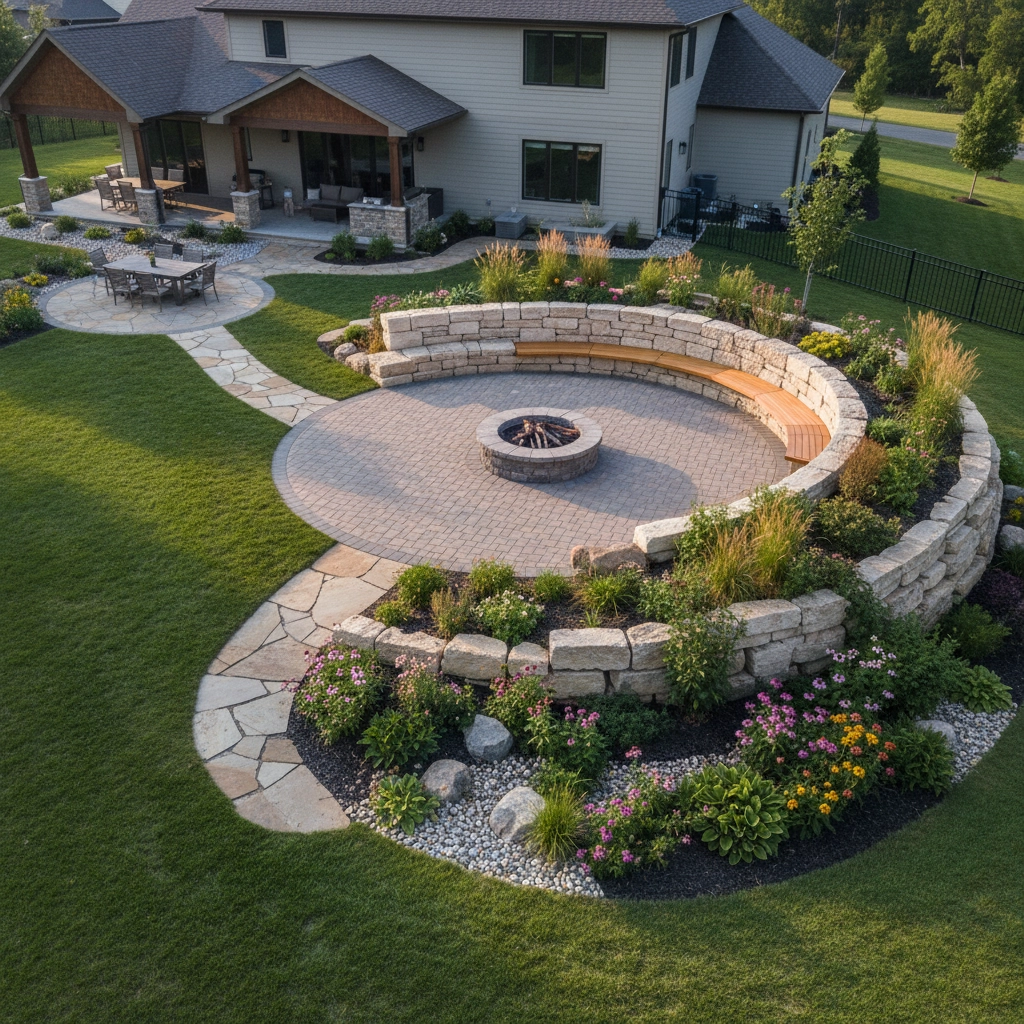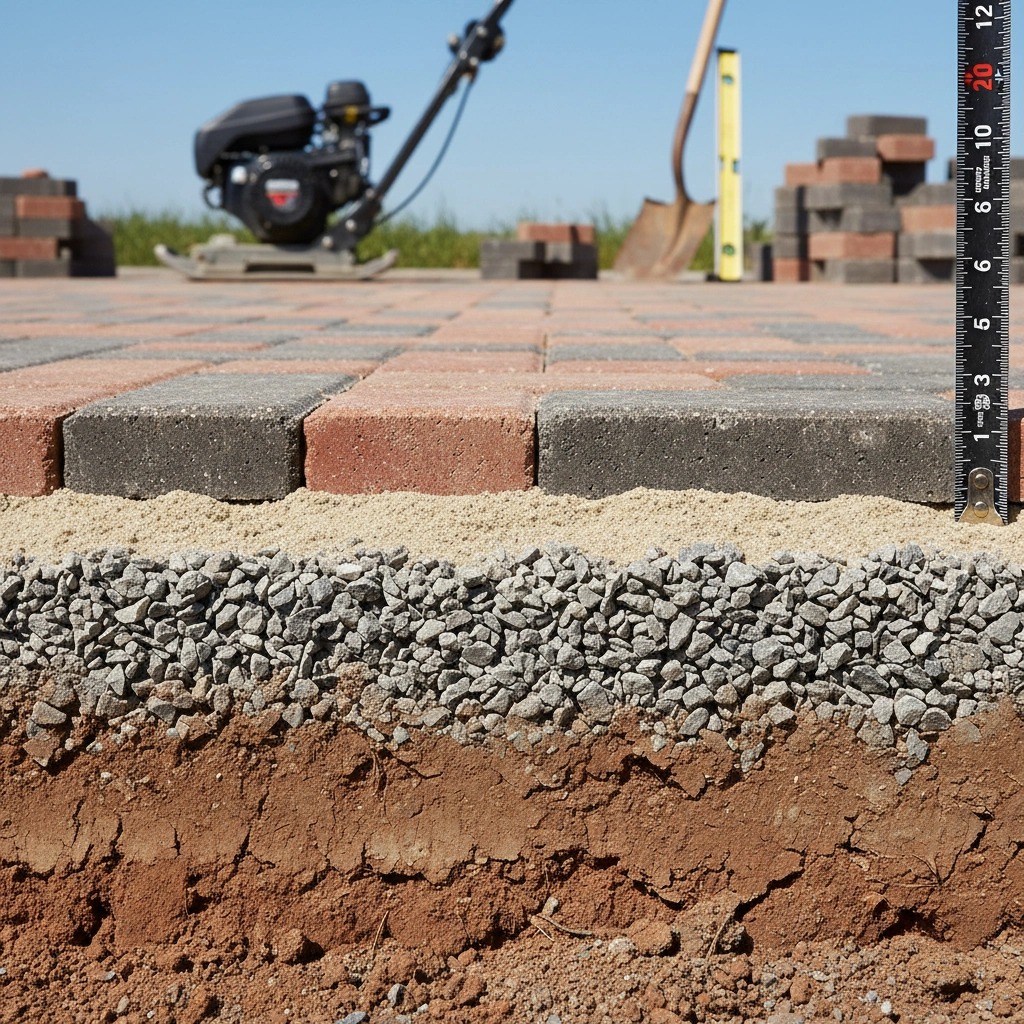The Ultimate Guide to Climate-Resilient Hardscaping: Everything You Need to Succeed in Northeast Ohio
If you've lived in Northeast Ohio for more than a winter, you know our weather doesn't mess around. One day it's 60 degrees, the next we're buried under two feet of snow, and come spring, everything's soggy and shifting. Your outdoor hardscaping needs to be tough enough to handle all of this – and still look great doing it.
Whether you're planning a new patio, driveway, retaining wall, or walkway, building for Northeast Ohio's climate means thinking beyond just aesthetics. It's about creating outdoor spaces that can withstand freeze-thaw cycles, manage heavy rainfall, and deal with our notorious clay soils without falling apart after a few seasons.
Why Northeast Ohio's Climate is Uniquely Challenging
Let's be honest – our weather is intense. We get everything from lake-effect snow that can dump feet of snow overnight to spring rains that turn yards into swamps. Then there's the freeze-thaw cycle that happens dozens of times each winter, expanding and contracting everything in its path.
These temperature swings are hardscaping's worst enemy. Water gets into tiny cracks, freezes, expands, and turns small problems into big ones fast. Add in our heavy clay soils that hold water like a sponge and shift with the seasons, and you've got a recipe for hardscape failure if you don't plan properly.
But here's the good news: when you design and install hardscaping that's built for these conditions, you end up with features that are incredibly durable and functional year-round.

Choosing Materials That Can Take a Beating
The materials you choose make or break your hardscape project – literally. In Northeast Ohio, you want materials that won't crack when temperatures plummet or shift when the ground moves.
Natural stone is your best friend here. Materials like limestone, sandstone, and granite have been handling Ohio weather for thousands of years. They're naturally resistant to freeze-thaw damage and actually get better looking with age. Plus, they provide excellent traction even when wet.
Concrete pavers are another smart choice, especially interlocking varieties with sand-filled joints. These flexible systems can accommodate ground movement without cracking, and if one paver does get damaged, you can replace it without redoing the entire surface.
Brick pavers offer classic appeal and proven durability. They've been used in Cleveland's historic neighborhoods for over a century, and many original installations are still going strong.
For gravel and crushed stone, choose materials that compact well and provide good drainage. These work great for secondary pathways and can be easily refreshed as needed.
What should you avoid? Poured concrete slabs (they crack), smooth surfaces that become ice rinks (dangerous), and any material that doesn't allow for drainage (water needs somewhere to go).
Smart Design Principles for Northeast Ohio
Good hardscape design in our region starts with understanding how water moves across your property. Every hardscape feature should either direct water where you want it or allow it to drain properly.
Slope everything away from structures – even patios need a slight grade to prevent pooling. Water that sits on surfaces during temperature swings will cause problems eventually.
Create multiple levels when dealing with slopes. Retaining walls not only prevent erosion but create usable flat spaces for patios, gardens, or seating areas. They also add visual interest and help manage water flow.
Plan for snow removal from day one. Wide pathways, gentle curves, and textured (not smooth) surfaces make winter maintenance much easier. Your future self will thank you when you're not chipping ice off a slippery stone pathway at 6 AM.

Essential Hardscape Features That Work
Patios and Entertainment Areas
A well-built patio becomes an outdoor room that you can use three seasons of the year. Brick or stone pavers with proper base preparation can handle our freeze-thaw cycles without cracking. Size them generously – Ohio summers are perfect for outdoor entertaining, and you'll want space for furniture, grills, and fire features.
Walkways and Pathways
Your pathways need to be safe in all weather conditions. Natural stone with a textured surface provides good traction even when wet. Avoid polished surfaces that become skating rinks in winter. Strategic lighting makes these paths safer during our long winter nights.
Retaining Walls
These workhorses serve multiple purposes. They prevent soil erosion, create level planting areas, provide seating, and add structure to your landscape. In Northeast Ohio's hilly terrain, properly built retaining walls are often essential for creating usable outdoor space.
Drainage Solutions
This might not be the glamorous part, but proper drainage prevents most hardscape problems. French drains, permeable pavers, and strategically placed rain gardens manage water naturally. Clay soils don't drain well, so you need to plan for where that water will go.

Installation Timing and Techniques
Timing your hardscape installation can make a huge difference in the final quality. Late spring through early fall provides the best conditions. The ground is workable, but you're not racing against winter freezes or dealing with muddy spring conditions.
Proper base preparation is crucial in our climate. This means excavating deep enough, using the right base materials, and compacting everything properly. Shortcuts here lead to shifting, settling, and cracking later.
Drainage installation happens during the base preparation phase. This is when French drains, base drainage layers, and proper grading get established. Once your hardscape is installed, fixing drainage problems becomes expensive and disruptive.
Joint materials matter too. Sand-filled joints in paver installations allow for slight movement without damage. Rigid mortared joints might look neat initially, but they're more likely to crack in our climate.
Dealing with Clay Soils
Northeast Ohio's clay soils present unique challenges. They hold water, expand when wet, shrink when dry, and can shift significantly with temperature changes.
Soil amendment might be necessary in planting areas adjacent to hardscaping. Adding organic matter and improving drainage helps prevent clay from putting pressure on hardscape features.
Extended base preparation in clay soils often means going deeper and using more base material. The extra investment in proper foundation work pays dividends in longevity.
Drainage becomes even more critical in clay soils. Water that can't drain through the soil needs alternative paths, or it will find ways to damage your hardscaping.

Maintenance for Long-Term Success
Even the best-built hardscaping needs some attention to stay in top condition.
Annual inspections help catch small problems before they become big ones. Look for settling, shifting, drainage issues, or damaged materials after each winter.
Joint maintenance in paver installations means refreshing sand as needed and keeping joints properly filled. This prevents weed growth and maintains the structural integrity of the installation.
Drainage system maintenance includes keeping drains clear of debris, ensuring proper water flow, and addressing any erosion issues promptly.
Winter preparation involves clearing leaves from drainage areas, ensuring proper grades are maintained, and having a plan for snow and ice removal that won't damage your hardscaping.
Integrating Hardscape with Landscaping
The best outdoor spaces blend hardscaping with plant materials seamlessly. In Northeast Ohio, this means choosing plants that complement your hardscape materials and thrive in our climate.
Native plants work best because they're adapted to our conditions. They require less maintenance, provide better erosion control, and support local wildlife.
Strategic planting can soften hard edges, provide privacy, and add seasonal interest. But avoid planting large trees too close to hardscape features – root growth can cause problems later.
Rain gardens and bioswales** integrate naturally with hardscaping while managing stormwater runoff. These features turn a drainage necessity into an attractive landscape element.
Professional Installation vs. DIY
While some hardscape projects can be DIY-friendly, Northeast Ohio's challenging conditions often make professional installation a wise investment.
Professionals understand local soil conditions, proper base requirements, and drainage solutions that work in our climate. They also have access to proper equipment and materials that might not be available to homeowners.
The cost of fixing a failed hardscape installation often exceeds the cost of professional installation from the start. When dealing with structural elements like retaining walls or complex drainage systems, professional expertise becomes essential for both safety and longevity.
Ready to Build Your Dream Outdoor Space?
Creating climate-resilient hardscaping in Northeast Ohio requires careful planning, quality materials, and proper installation techniques. When done right, these features enhance your property value while providing years of enjoyment through every season.
At LeafStone Landscapes, we've been creating durable, beautiful hardscapes that stand up to Northeast Ohio's challenging climate for years. Our team understands local conditions and uses proven techniques to build outdoor spaces that last.
Ready to transform your property with hardscaping that's built to last? Contact us today for a consultation. We'll help you design and build outdoor features that enhance your lifestyle while standing strong against whatever Northeast Ohio weather throws their way.


